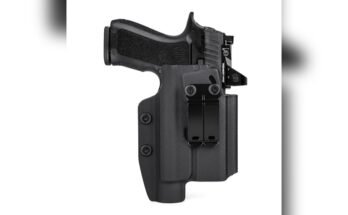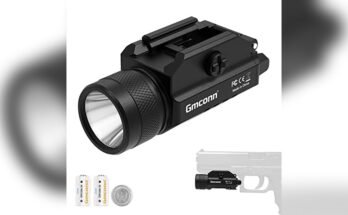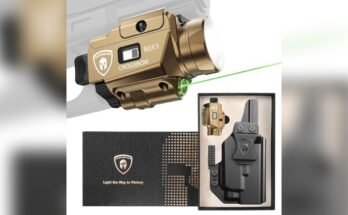If you’ve ever asked, what are the different types of holsters?, you’re in the right place. I’ve spent years testing carry setups for work, training, and everyday life. I know what works in the real world and what causes sore hips by lunch. In this guide, I’ll break down holster types, where they shine, where they fail, and how to choose with confidence. You’ll get clear answers, practical tips, and insights you can use today.
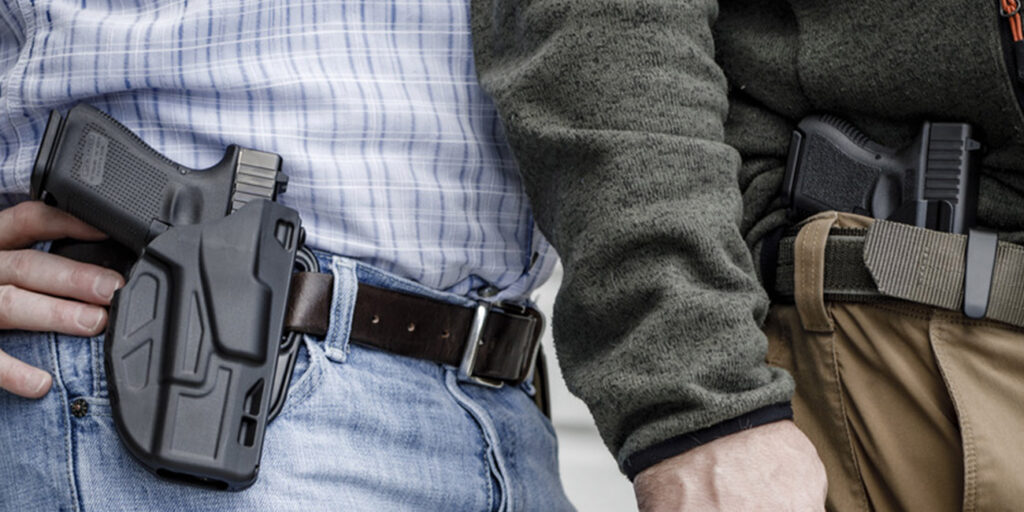
Holster Basics: How Holsters Differ And Why It Matters
Not all holsters are built for the same job. Some hide the gun well. Some protect the trigger. Some lock the gun in place for duty use. The right holster balances safety, comfort, and access. Your body shape, daily routine, and local laws also matter.
Key differences include:
- Carry position where it sits on the body, like inside or outside the waistband
- Attachment style clips, loops, paddle, MOLLE, or shoulder harness
- Retention how the holster holds the gun, from simple friction to locked systems
- Material leather, Kydex, hybrid, nylon
- Purpose concealed carry, duty, competition, range, hiking
A quick tip from experience: start with safety. A good holster covers the trigger, holds your firearm stable, and lets you get a full firing grip before you draw. Comfort comes next, but never at the cost of control.
Common Carry Styles: IWB, OWB, And More
Here are the most common holster types and when they work best.
- IWB Inside the waistband. Great for concealed carry. Best at the appendix position AIWB or strong side 3–4 o’clock for right-handed users. I use IWB for most daily carry because it hides well under a T-shirt.
- OWB Outside the waistband. Easier to put on, very comfy, and fast to draw. Needs a cover garment to conceal. Ideal for range days and open carry where legal.
- Appendix AIWB Sits up front near your belt buckle. Offers fast access and good concealment. Requires careful setup and holster choice with solid retention and a wing to tuck the grip in.
- Shoulder Holster Harness under the arm. Good for long drives or coats. Slower to draw for many and needs a jacket to conceal.
- Ankle Holster For small backup guns. Works if you sit a lot, like desk work or driving. Not ideal for fast access while standing or running.
- Pocket Holster For small handguns. Keeps the gun upright and covers the trigger. Only use one pocket for the gun and nothing else.
- Belly Band Wrap around the torso. Flexible, no belt needed. Good for active wear but reholstering can be slow.
- Chest or Chest Rig Popular for hiking and hunting. Keeps the gun clear of packs and waist straps.
- Duty Holster Thick, rugged, with retention levels for law enforcement and security. Built for open carry and high retention.
- Competition Holster Tuned for speed with adjustable angles and tension. Not meant for concealment.
My field note: a single holster rarely does it all. I run AIWB for daily carry, OWB for classes and range days, a chest rig for the mountains, and a pocket holster for minimalist days.
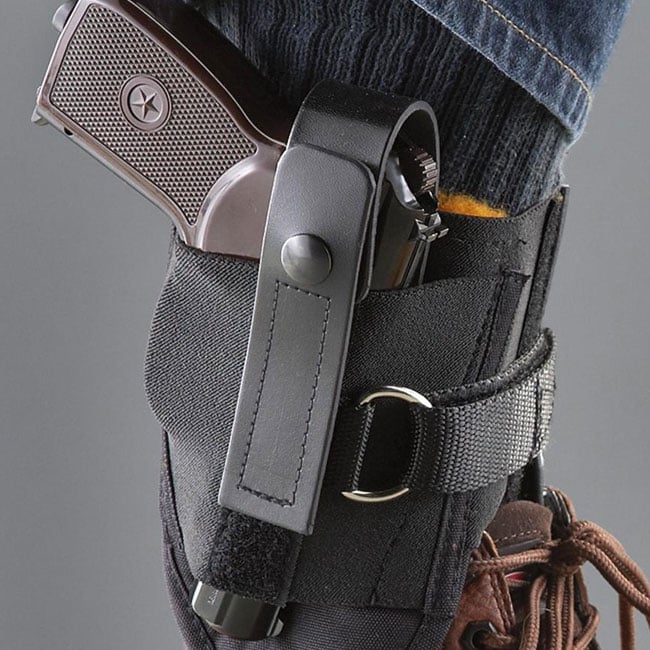
Holster Materials: Leather, Kydex, Hybrid, And Nylon
Material affects comfort, durability, and draw feel.
- Kydex Rigid plastic. Holds shape, clicks in with clear retention, resists sweat. Easy reholstering. Can feel sharp if edges aren’t polished.
- Leather Classic look, comfy once broken in. Needs care to avoid collapse or moisture damage. Good retention when molded well.
- Hybrid Kydex shell with a leather or synthetic backing. Mix of comfort and structure. Check that the mouth stays open.
- Nylon Soft and light, often budget friendly. Many lack structure. Better for temporary or niche use than daily carry.
Pro tip: look for smooth edges, proper trigger coverage, and a sight channel that fits your front sight. A sweat guard can help comfort and protect the slide.
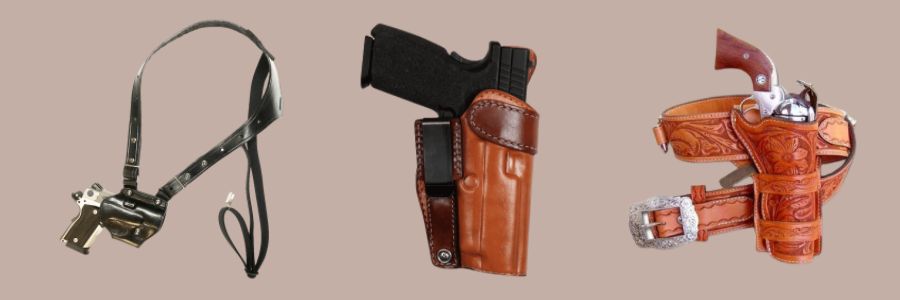
Attachment Methods: Clips, Loops, Paddle, And More
How the holster connects to your belt or body changes stability and convenience.
- Discreet Clips Easy on and off. Good for IWB. Choose metal or strong polymer to reduce breakage.
- Soft Loops With snaps. Very secure on a belt. Great for heavier guns.
- Hard Loops Fixed loops. Max stability, less quick to remove.
- Paddle Slips inside the waistband without threading the belt. Good for OWB when you swap gear often.
- MOLLE and Tek-Lok For chest rigs, battle belts, and packs. Modular and secure.
- Sticky or Friction Some pocket or belly band styles rely on grip against fabric. Simple but check stability often.
If you move a lot, choose loops. If you need quick on and off, clips or a paddle can be worth it.
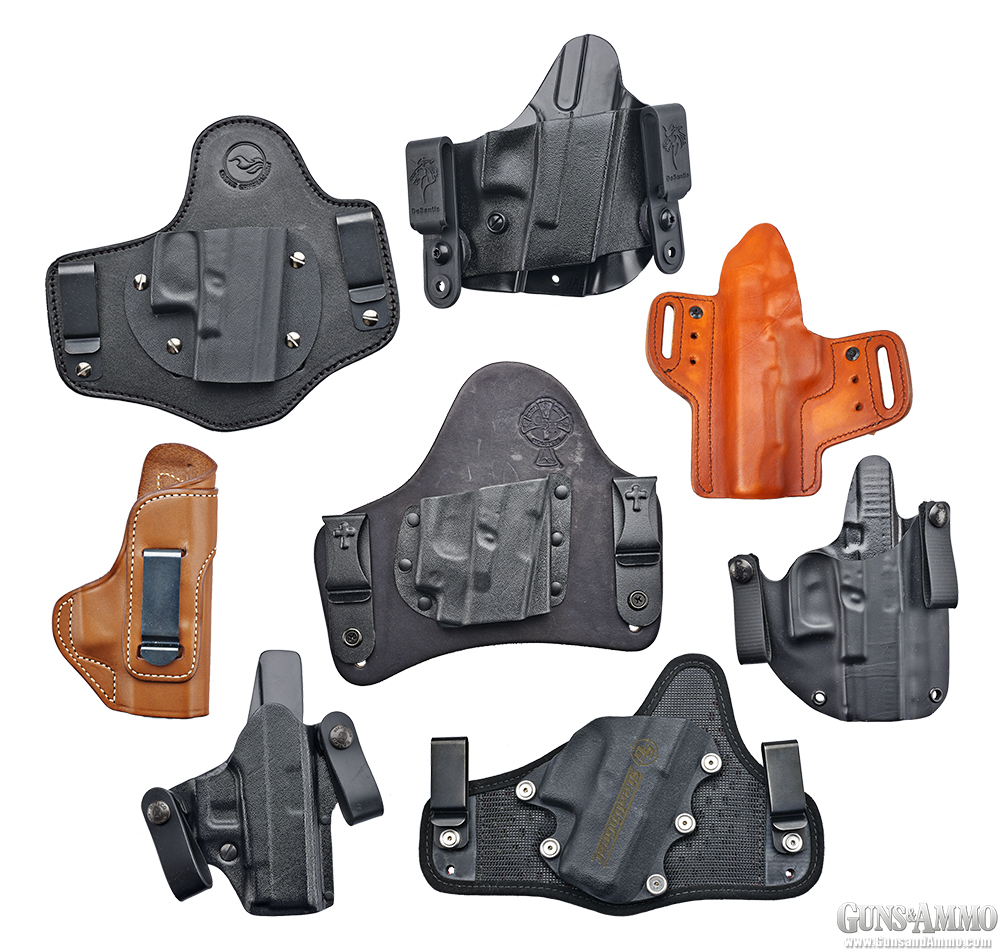
Retention Levels: From Friction To Locked
Retention is how the holster holds the gun until you draw. It protects against drops, grabs, and loss.
- Passive Retention Tension or molded fit. Common in Kydex and hybrids. You adjust a screw to tune it.
- Level 1 Basic retention with friction or a simple detent. Good for most concealed carry.
- Level 2 Adds an active device, like a thumb lever or hood. Better for open carry and security.
- Level 3 And Beyond Multiple actions, such as a hood plus a push or rock motion. Common in duty rigs to prevent grabs.
Lesson learned from training: never buy a retention system you have not practiced with. Dry practice your draw with an empty firearm until the motion is smooth and safe.

Fit And Compatibility: Getting The Right Match
Your holster must match your firearm model and any add-ons.
- Gun Model Holsters are often gun-specific. A loose fit risks safety.
- Light or Red Dot If you run a weapon light or optic, the holster must be built for it. Look for optic cuts and light-bearing shells.
- Barrel and Slide Length A longer holster can add comfort by spreading pressure. A very short holster can poke or tip.
- Belt Choice A stiff carry belt prevents sag and keeps the draw angle consistent.
I once tried to force a “close enough” fit. The result was a sloppy draw and sore hip. It pays to buy the model built for your exact setup.
Use Cases: Concealed Carry, Duty, Competition, And Outdoors
Match the holster to the mission.
- Concealed Carry Aim for safety, comfort, and concealment. IWB or AIWB with a wing and claw often works best.
- Duty and Security Choose Level 2 or Level 3 retention, rugged build, and tested locking parts.
- Competition Seek open-mouthed designs with fast draw and adjustable cant and height. Safety rules vary by league.
- Outdoors Chest rigs and strong OWB holsters resist weather, pack straps, and rough terrain.
Think of holsters like shoes. Running shoes for running, boots for hiking, and dress shoes for work. The right tool makes the job easier and safer.
Comfort And Concealment: Small Adjustments, Big Gains
Most comfort issues come from angle, height, and belt tension.
- Cant Angle Adjust forward tilt to tuck the grip and reduce printing.
- Ride Height Lower can conceal better. Higher can draw faster. Find your middle ground.
- Wedges and Wings Wedges push the muzzle out from your body for comfort. Wings push the grip into your body to hide the gun.
- Clothing Choose a sturdy belt and a shirt with a bit of drape. Patterns hide printing.
I solved hot spots by adding a foam wedge and moving the clip one hole. Simple tweaks make a big difference.
Training, Safety, And Good Habits
A holster is part of a safety system.
- Safe Reholstering Move slow and clear clothing. Keep the muzzle pointed in a safe direction. Do not force it.
- Trigger Coverage Always verify the holster fully covers the trigger and trigger guard.
- Dry Practice Use an unloaded firearm. Check it twice. Practice draws and reholstering with care.
- Regular Checks Tighten screws with thread locker. Inspect clips and loops. Replace worn parts.
Industry testing and training data show that careful holstering and steady practice reduce accidents. Make the safe choice the easy choice.
Buying Guide: How To Choose The Right Holster
Use this simple checklist.
- Purpose Concealed carry, duty, competition, or outdoors
- Position IWB, OWB, AIWB, shoulder, pocket, ankle, chest
- Fit Exact gun model, plus light and optic support
- Retention Level 1, 2, or 3 depending on your needs
- Attachment Clips, loops, or paddle based on stability and convenience
- Comfort Edges, sweat guard, wedge, wing, ride height
- Quality Reviews, return policy, and warranty
If you are new, start with a proven IWB or AIWB Kydex holster from a reputable maker, plus a solid belt. Then adjust from there.
Care And Maintenance: Make It Last
Good care helps performance.
- Kydex Wipe with mild soap and water. Check screws and spacers.
- Leather Condition lightly to prevent drying. Keep it dry and out of heat.
- Hybrid Treat both parts as above. Watch for softening near the trigger area.
- Hardware Use thread locker on screws once you dial in retention.
Schedule a quick monthly check. It takes minutes and saves headaches.
Common Mistakes To Avoid
Learn from my early blunders.
- Buying One Size Fits Many It rarely fits well. Use a model-specific holster.
- Ignoring Belt Quality A flimsy belt ruins even the best holster.
- Skipping Practice A safe draw requires reps. Dry practice matters.
- Overlooking Clothing You may need slight wardrobe tweaks for concealment.
- Poor Retention If it shakes loose in a jog test, it’s not right.
Small fixes now prevent big problems later.
Frequently Asked Questions Of What Are The Different Types Of Holsters?
Which holster is best for concealed carry?
IWB or AIWB holsters are the top picks. They hide well, stay stable, and allow a fast draw with practice.
Are shoulder holsters good for daily carry?
They work well if you wear a jacket and drive a lot. They are slower for many users and need training to draw safely.
What is a Level 2 or Level 3 duty holster?
These add active retention like hoods or levers. Level 2 has one extra step. Level 3 has more than one. They help prevent gun grabs.
Can I carry with a red dot and light?
Yes, if the holster is built for your optic and light. Look for optic cuts and a light-bearing shell that matches your gear.
Is leather better than Kydex?
Neither is better in every case. Kydex is rigid and consistent. Leather can be very comfortable. Choose based on your needs and care routine.
Do I need a special belt for holsters?
A stiff carry belt helps a lot. It supports the holster, keeps angles steady, and improves comfort.
How do I reduce printing under a T-shirt?
Use a wing, add a foam wedge, adjust cant, and choose shirts with some drape or patterns.
Conclusion
Picking the right holster is about purpose, safety, and fit. Start with how you carry, match the holster to your gun and gear, and fine tune comfort with small adjustments. Practice often, keep your setup simple, and build habits that keep you safe and confident. Ready to dial in your carry? Try the checklist above, test at home with safe dry practice, and make changes one step at a time. Want more tips like this? Subscribe for updates, share your setup in the comments, or explore our related guides next.

